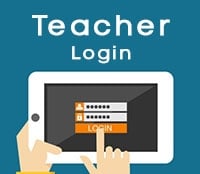You have /5 articles left.
Sign up for a free account or log in.

eReadyLearn
NEW ORLEANS -- Sherri Restauri, who joined Coastal Carolina University last summer as director of online learning, said that pre-course assessment surveys she used in the past never showed her what skills her students had. She said web-based eLearnReady, created by her Coastal Carolina colleague Cheng-Yuan Lee, provides that information.
“You know what [skills] they have, and you can use that information to shape the class,” said Restauri, speaking during a session at the Online Learning Consortium's Innovate conference here last week. “As an instructional designer and director of online learning, this is huge.”
eLearnReady provides information about students’ abilities at the onset of an online class, offering insights that can help instructors tailor their teaching to boost learners’ success, Lee and Restauri said during their conference session.
One reason Lee and Restauri said they presented eLearnReady at the OLC conference was to make their peers aware that the free program is available to any educator. Attendees clearly were intrigued -- Restauri said this week that they already received requests from 40 instructors who wanted access to the program.
eLearnReady is only being used by about 20 CCU faculty members, and Restauri said she was surprised when she arrived at the university that it wasn't better utilized. She said this week that's because Coastal Carolina's online learning department is new and that individual colleges and departments previously managed their own online course initiatives.
The director added that more instructors are about to implement the tool, and that it recently was added to the university's online course template in a learning module called Getting Started. “With the tool being implemented into our … template, the adoption rate will rise dramatically in the near term,” she said.
The eLearnReady survey asks students 40 questions in nine categories: self-motivation, self-management, feedback, interaction, reading visual text, reading visual graphics, listening, technology and course management. Once learners finish taking the survey, the site generates ratings of low, medium and high for each category for each student. Then it compiles the scores for all the students into one report so instructors can see what areas the students are prepared and what areas they need extra help, said Lee, an associate professor at Coastal Carolina.
Colleges and universities see plenty of potential in predictive analytics -- that is, using data to make informed decisions about strategies that help students progress through courses and graduate. But there also is potential for abuse, namely that data could instead be used to judge students and limit their opportunities.
Faculty say data science works best when converted to practical tools that instructors, advisers and students can use to positively impact learning and success. Restauri said Tuesday that instructors who employ eLearnReady cannot see an individual student's survey data, and that was done intentionally so that learners will answer the questions honestly.
eLearnReady was conceived in 2003 by Lee and Natalie Abell, who both were at the University of Findlay and had started teaching online classes. Lee said eLearnReady was a one-page survey that was expanded to the nine-category format five years ago.
The information provided by eLearnReady is useful for all online course instructors, said Restauri, but she added that the program is most valuable for those teaching introductory undergraduate and graduate courses because “you don’t know where the students are coming from.”
Benefits for Students
Students have access to their scores for the nine eLearnReady categories. In the areas they received lower scores, the program provides written study tips and video tutorials. In the short two- to three-minute videos that were added two years ago, male and female students provide tips for their peers by acting out scenarios.
“We tried to make them a little bit funny so they would remember [the tips] better,” said Lee, eLearnReady's coordinator and webmaster.
Some CCU instructors require learners to view the videos and talk about them with their peers in online discussion forums, Restauri said.
OLC conference session attendees asked if the videos were branded with CCU’s logos. Both presenters said the only reference to the university is that some students are wearing teal, the university’s color.
Insights and Training for Instructors
eLearnReady shows how many students completed surveys, and allows instructors to send e-mail reminders to learners who haven’t filled one out. Some CCU faculty members require students to complete the survey and provide credit for completion, Restauri said, adding 80 percent or more of learners per class complete surveys.
Once surveys are completed, instructors receive a compilation of the students’ scores (but they don’t have access to each individual’s scores). The score totals, which are presented in bar charts as high, medium and low, give instructors a picture of the students' strengths and challenges, Lee said.
“If students [scored low in] motivation, it tells me I need to give them more encourage in the class,” he said. “If they have problems with time management, I can give them time-management tips.”
Teaching strategies and tips for instructors provided by Restauri’s team were recently added to eReadyLearn, and Lee said that he’s in the process of creating video tutorials for faculty members, too.
Going forward, eLearnReady will include satisfaction and performance categories to help predict students’ future performance, Restauri said. During an interview after the conference session, Lee said he hopes to expand eLearnReady to high schools because secondary school teachers and students also can benefit from the kind of information and tutorials the site provides.








